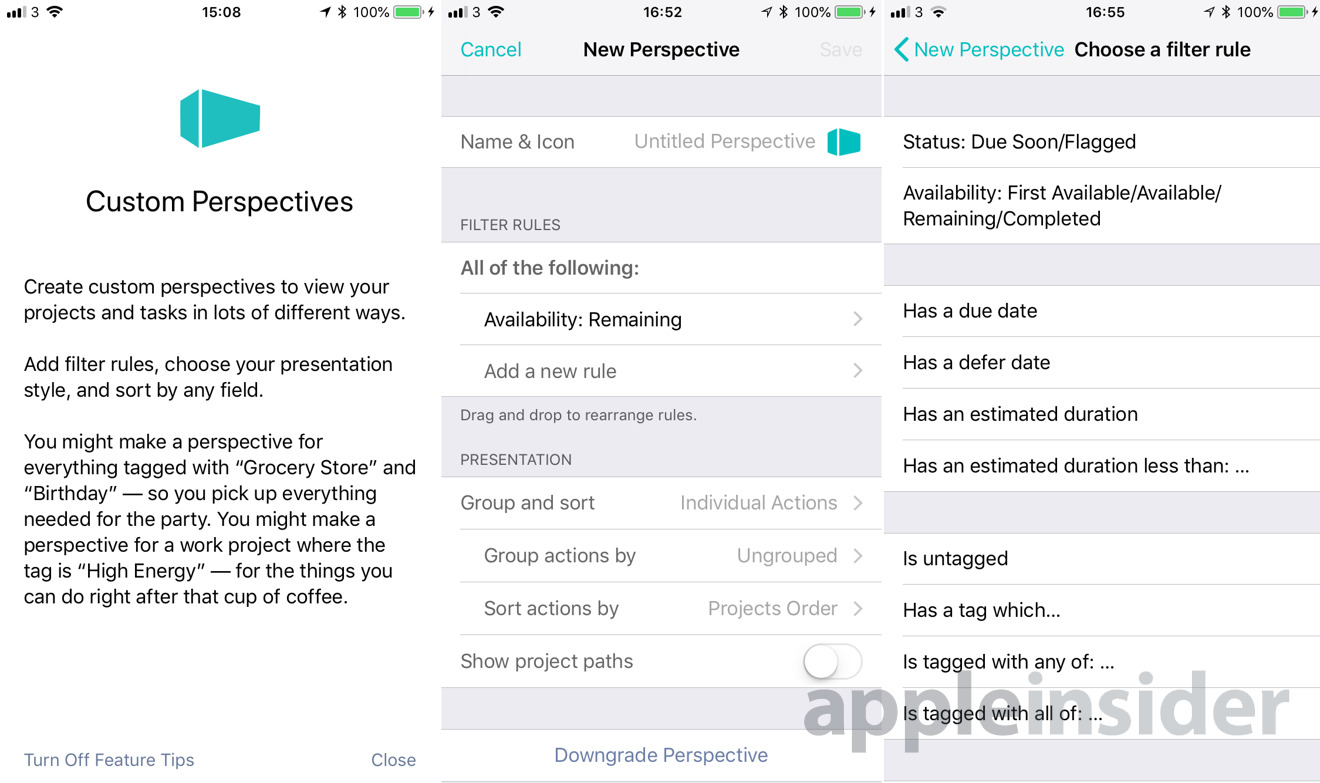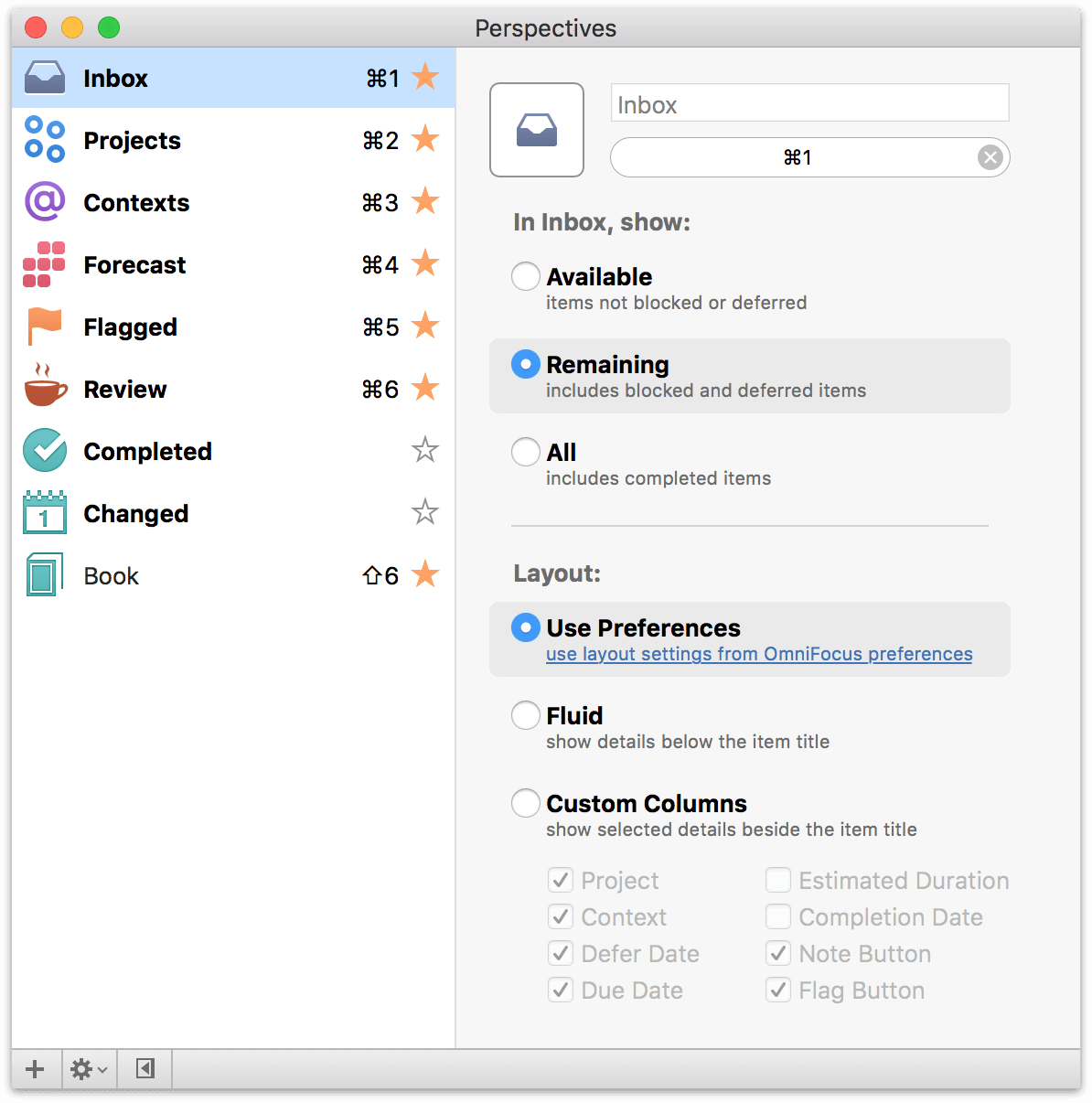Beyond creating and editing projects in personal project management software like OmniFocus and Things, one needs to know how much time one has sunk into one’s projects. However, a major limitation of those apps is that they do not provide time tracking functions.
Another issue with OmniFocus stems from its over-commitment to David Allen’s book Getting Things Done. As popular and useful as the book is, its ideas were developed in the 1990s. The system deals with piles of paper and projects like cleaning one’s garage. Although many who write about the book have swallowed the claim hook, line and sinker, that Getting Things Done presents a knowledge work system, the fact is that it was clearly not designed specifically for the core functions of knowledge work —e.g., learning and creating new scientific knowledge. Where are the examples in that book about creating new theories, for instance? You will find them in the empty set. Naught. That book is instead a general productivity system. That is not a criticism of the book. It’s just a correction of its common misrepresentation in the blogosphere, and I am sad to say, in some books written by academics on productivity (as I have mentioned elsewhere on this site).
OmniFocus Subscription ($9.99/month or $99.99/year): Gets you OmniFocus Pro for Mac, OmniFocus Pro for iOS, and OmniFocus for the Web. This is a great option for people who have not already purchased OmniFocus for Mac or iOS and would prefer to pay for everything with one simple subscription. GTD is a system (as opposed to a tool) that can be implemented via analog (pen and paper), dedicated apps (Omnifocus or Things 3) and no-code apps (Notion, Coda and Airtable). The five steps are as follows. Like nearly all of my Notion templates, this task and project manager template is 100% free. However, I’d love it if you entered your email in the field below and joined my Notion tips email list so that I could let you know when I release new Notion templates. I’ve partnered with Notion to do this series of events to talk about the relationship between that methodology, which has a lot of interesting ideas, concepts, frameworks, and a very practical thing which is the Notion software. So, what I want to talk to you about tonight is Notion as a Second Brain.
To understand my point it helps to read about knowledge work by cognitive scientists and philosophers. Cognitive science is, after all, quite concerned with the production and usage of personal and objective (public) knowledge. Philosophy of knowledge is one of the cognitive sciences. Essential readings on knowledge work include Karl Popper’s Objective Knowledge and Carl Bereiter’s Education and Mind in the Knowledge Age. My own Cognitive Productivity contains an AI-based extension of Popper’s seminal concepts.
Thus, the notion of context presented in Getting Things Done is archaic and not particularly helpful for knowledge workers. More important than context for modern knowledge workers is the notion of activity. I have argued elsewhere on this web site (and in Cognitive Productivity) that OmniGroup could replace OmniFocus’s notion of context with the notion of activities.
OmniFocus should, in addition, learn to automatically categorize actions. For example, if one of your tasks is to read a paper, OmniFocus should know that this is a reading action. One should not have to classify it as such. Then, OmniFocus should provide a way to filter activities by activity type. Some of the actions that matter most to knowledge workers are described in mySelfQuantifier. (As you would expect, writing, programming, debugging, and reading are important types of activities.) Mozaik knjiga kontakt.
Whereas OmniFocus does not directly support time-tracking, it has an extensive AppleScript dictionary which could be used by time-tracking software developers. mySelfQuantifier could and I think should leverage it.
With the mySelfQuantifier time-tracking system and example workbook, I’ve tried to address these two OmniFocus gaps. With mySelfQuantifier, you can track the amount of time spent on particular projects and in particular activities.
I’ve recently published a collection of screencasts on the mySelfQuantifier time tracking system. The screencasts adds to thousands of words on the system, with more to follow. Enjoy.
Disclaimers
OmniGroup produces some of the best apps for MacOS®. I am a dedicated user of OmniFocus, OmniOutliner and OmniGraffle. I recommend these apps without hesitation. But every app can be improved. As noted above, OmniFocus has an AppleScript® dictionary. Thus self-quantification apps could integrate with OmniFocus.
mySelfQuantifier is not a complete solution to the problem of tracking one’s time, let alone all self-quantification. It is a free integrative collection of concepts backed by a sample workbook. See my next blog post on the future of self-quantification.
My comments about Getting Things Done are directed exclusively at the book Getting Things Done. I never comment on the brand that goes by that name; nor do I comment on the author of the book. My writing on the subject is for the purposes of advancing knowledge (scholarly purposes.)
Last year, I spent the time reading The Bullet Journal Method, by Ryder Carroll, and also wrote about digital bankruptcy with analog saving me.

While the principles of this are often a saving grace of augmented focus, I love the advantages of a digital system:
- I can search and refer back
- The right metadata surfaces the right things at the right time
- It is easily re-organized based on changing needs
Notion Omnifocus Integration
Of course, aspects like metadata, information architectures, and infinite choice make digital systems complex and nuanced. I need something sustainable through simplicity, particularly to make sure I’m ready for change, like how Rosemary Orchard and I talked about on our Nested Folders podcast (and, more recently, on Automators episode 49).

Notion And Omnifocus
Thinking of this, I embarked on a journey to digitally bullet journal. After a few iterations, I came up with a list of interoperating tools, which I think will prove a very effective stack.
The platform consists of five pieces on iOS:
- Agenda: This acts as the journal and reference system.
- OmniFocus: This is for action management.
- Daily Journal Shortcut: I’ve written about this shortcut before, but to recap, this Shortcut sets up a daily journal (that’s why it’s named that way) with today’s weather, calendar appointments, and OmniFocus due, flagged, and forecast-tagged actions.
- Rapid Logger Shortcut: This is the game-changer. When run, it asks for input, where I can Bullet Journal style add multiple items, each thing on a fresh line. Each line then gets appended to today’s daily journal in Agenda, timestamped. If a line starts with a dash, it gets treated like an action, and so appears as a checklist item in the Agenda daily journal note, but also gets added to my OmniFocus inbox as an action. As a bonus, the text going in to OmniFocus is treated as TaskPaper, so I can add flags, tags, and dates accordingly, which is awesome, but that metadata is not included in the Agenda note, keeping that list clean and tidy.
- Daily Wrap Shortcut: This is the icing on the cake. When run, this Shortcut helps me reflect on the day by asking guiding questions, the answers to which are then appended to the daily journal note in Agenda, along with a list of the tasks I completed today from OmniFocus.
These parts working together are helping to create structure in my life, but even better, it’s sustainable structure, because I can apply the simple notion of rapid-logging from Bullet Journaling combined with the complexities of a nuanced digital system.
Great side effect: I am more disciplined about what I log. A historical problem for me in my collection of actions is overuse of shorthand as a “bookmark” of thinking for later. That’s how I’ve ended up with items in my OmniFocus inbox like “Fifty-four”. I’m sure I knew what I was referring to when I wrote it down, but no idea later. With rapid logging, and thinking of things not just as actions or notes but as journaled facts for future reflection, my capturing is much more robust.
